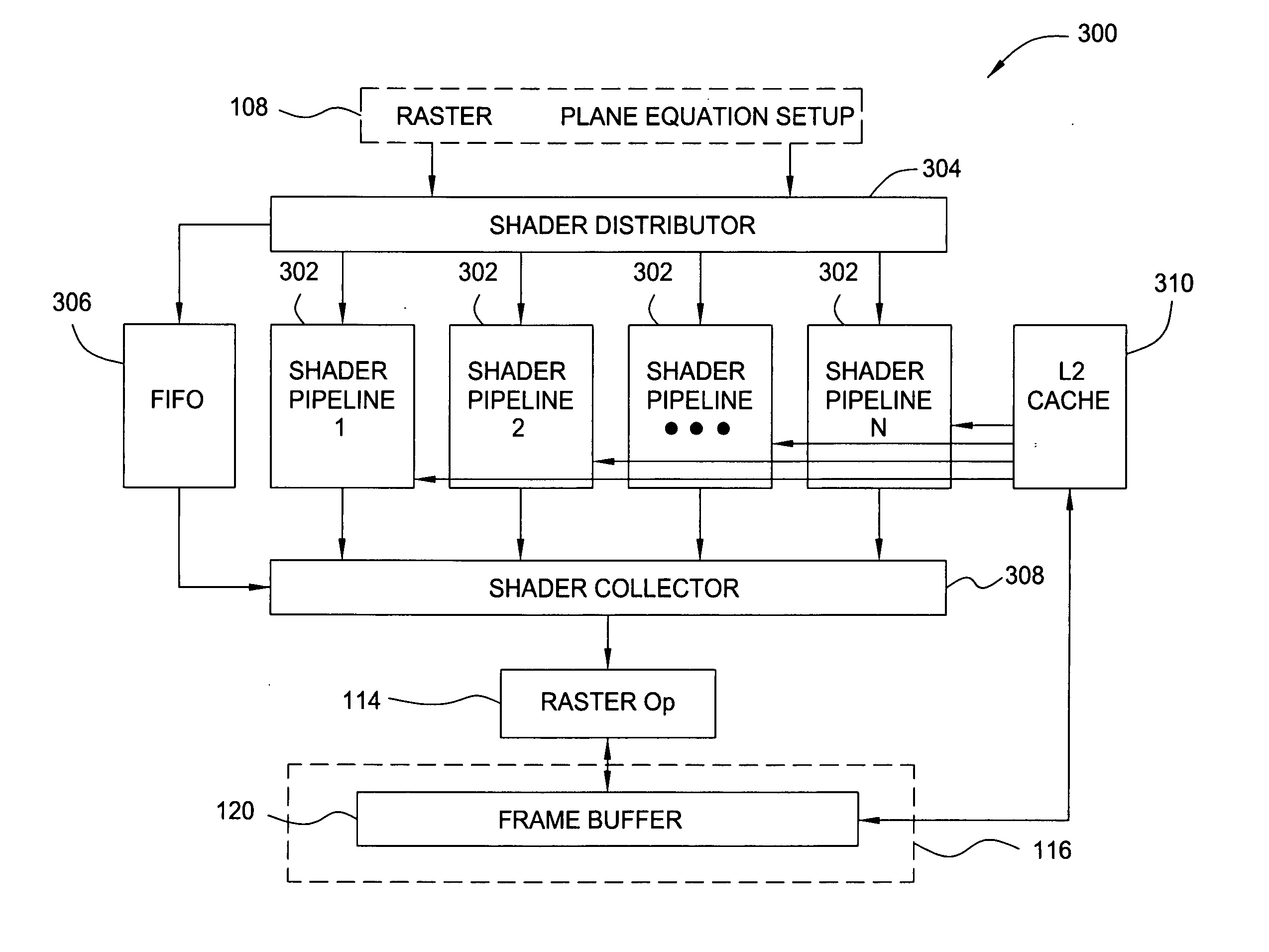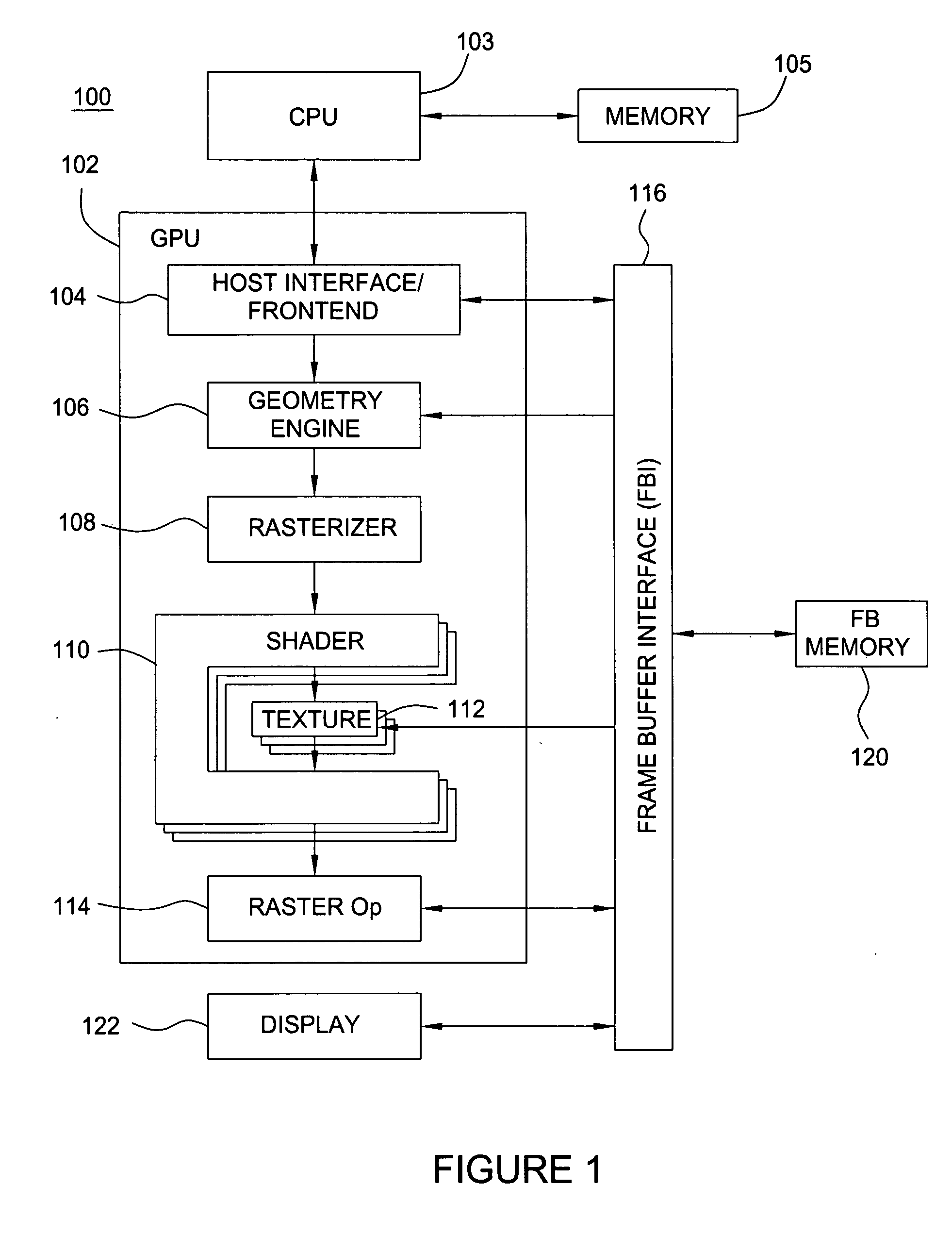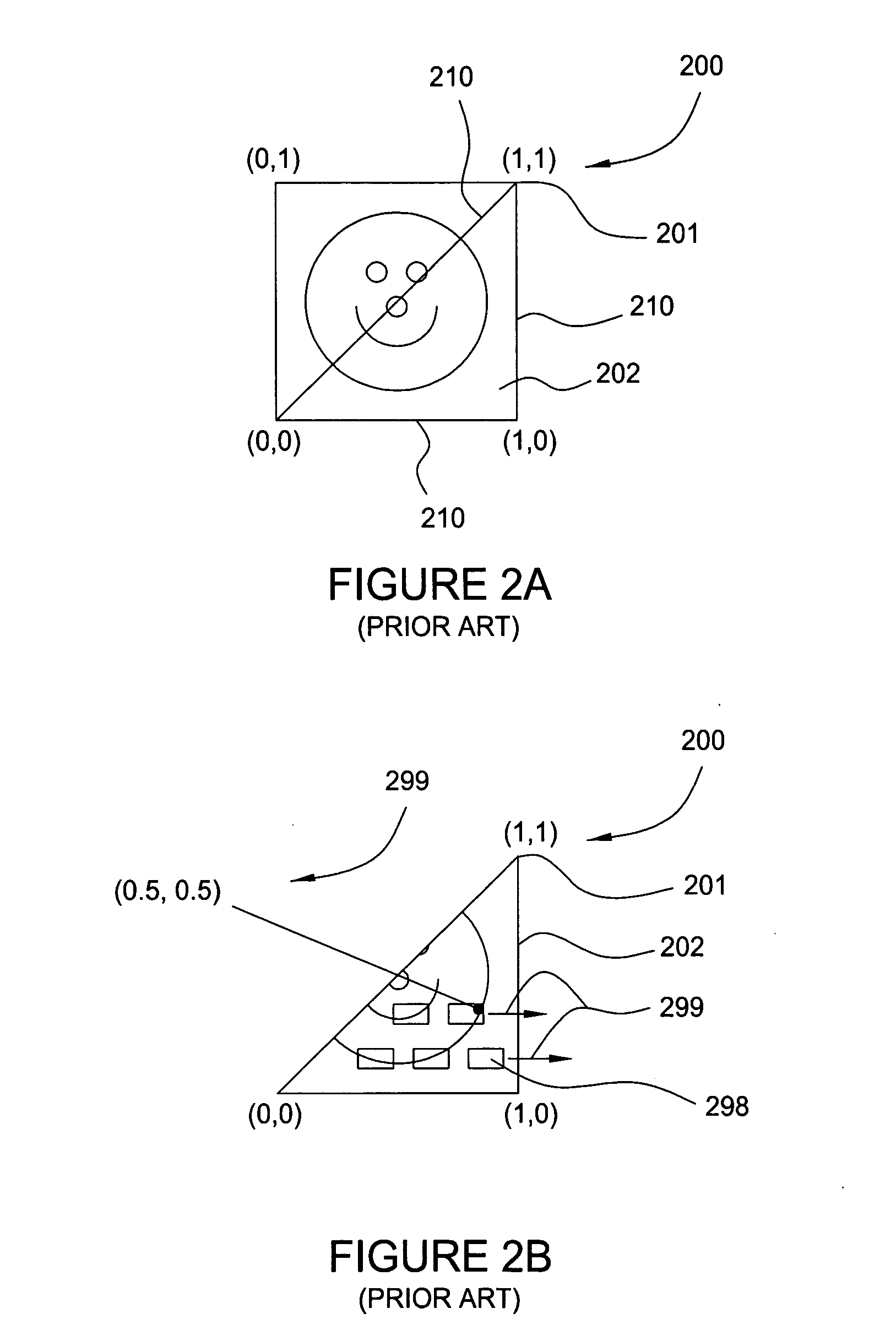Scalable shader architecture
a shader and shader technology, applied in the field of computer systems, can solve the problem that one or more shader pipelines can be functionally disabled
- Summary
- Abstract
- Description
- Claims
- Application Information
AI Technical Summary
Benefits of technology
Problems solved by technology
Method used
Image
Examples
Embodiment Construction
[0024] The principles of the present invention provide for new, scalable, and programmable shader architectures. A shader architecture that is in accord with those principles includes multiple shader pipelines that can be programmed to perform processing operations on rasterized pixel data to produce shaded pixel data. One or more shader pipelines can be functionally disabled while still maintaining the functionality of the shader. This enables reduced chip rejections, and allows for implementing lower or higher performance chips by simply adjusting the number of pipeline available in a given chip. Such a shader architecture includes a shader distributor that applies rasterized pixel data, albeit processed rasterized pixel data, to the various shader pipelines, beneficially in a manner that balances their workloads. A shader collector collects and organizes the shader pipeline outputs into proper order to produce shaded pixel data. A shader instruction processor (scheduler) programs...
PUM
 Login to View More
Login to View More Abstract
Description
Claims
Application Information
 Login to View More
Login to View More - R&D
- Intellectual Property
- Life Sciences
- Materials
- Tech Scout
- Unparalleled Data Quality
- Higher Quality Content
- 60% Fewer Hallucinations
Browse by: Latest US Patents, China's latest patents, Technical Efficacy Thesaurus, Application Domain, Technology Topic, Popular Technical Reports.
© 2025 PatSnap. All rights reserved.Legal|Privacy policy|Modern Slavery Act Transparency Statement|Sitemap|About US| Contact US: help@patsnap.com



